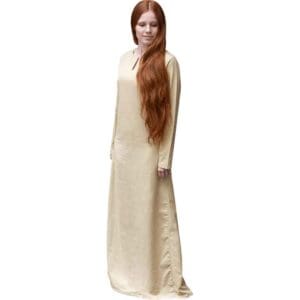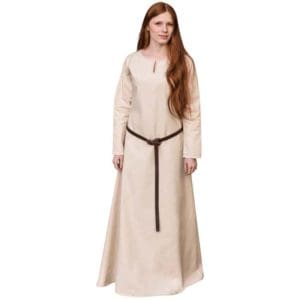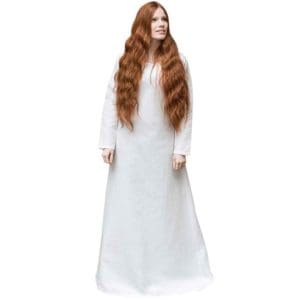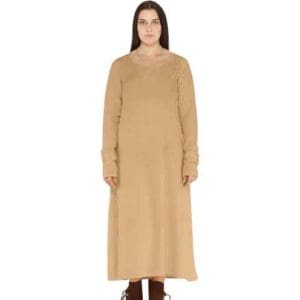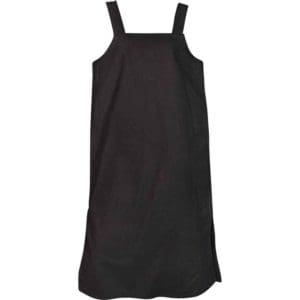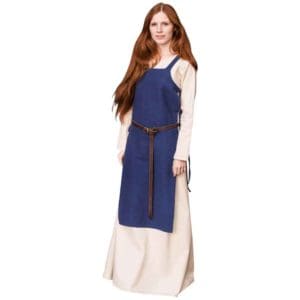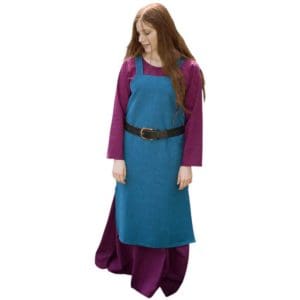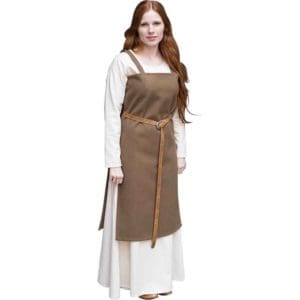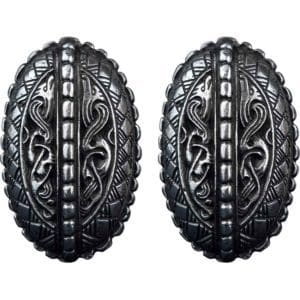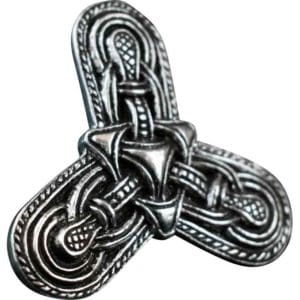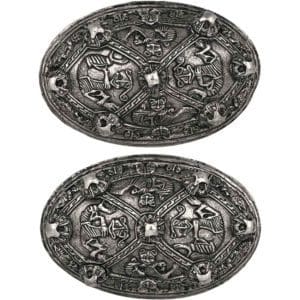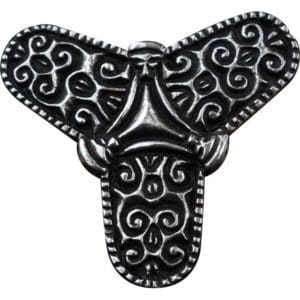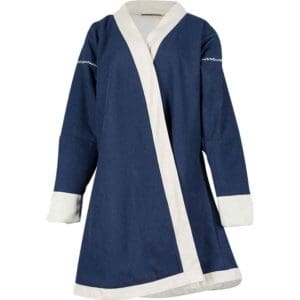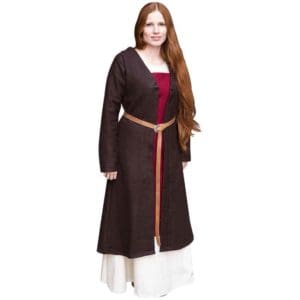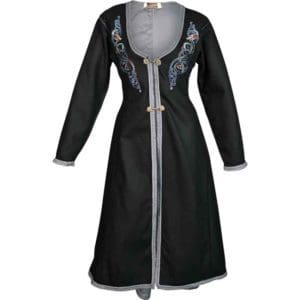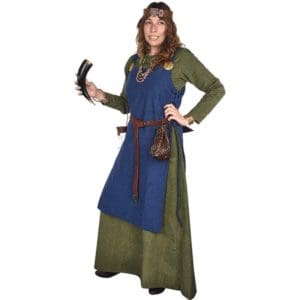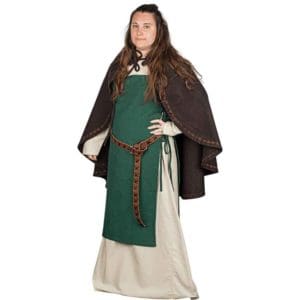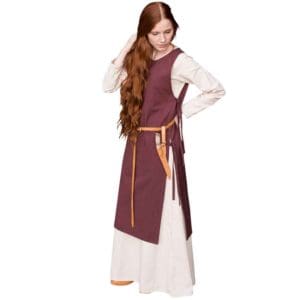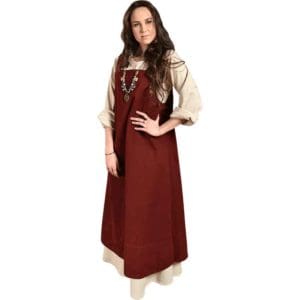Women’s Viking Clothing
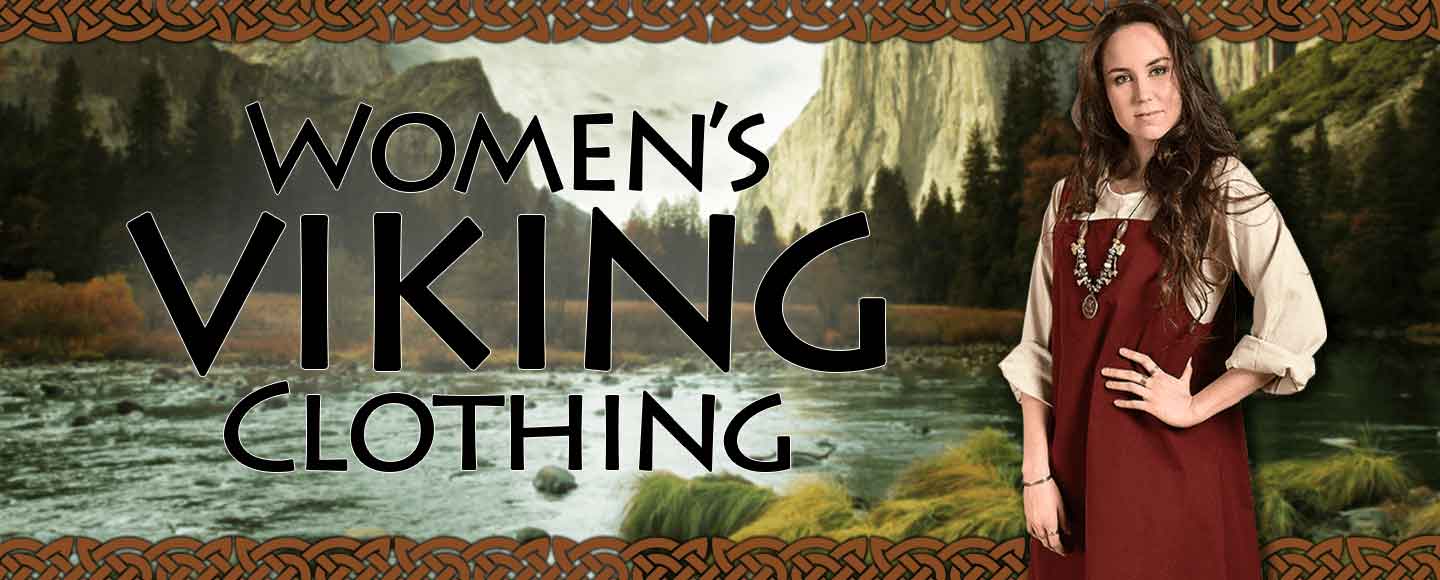
Now that we have gone over Viking age clothing in general and men’s Viking clothing, lets take a look at women’s Viking clothing. This article will look at the average Viking woman’s wardrobe. We will look at what garments they would wear, starting from the inside out.
Underdress
For most Viking women, the most basic layer of clothing was their underdress or shift. This undergarment is similar to the chemise in the medieval period. The shift was often made from linen. It would end usually around the ankle, or it would have a floor-length hem. Evidence suggests that Danish Viking women wore more plain underdresses. Meanwhile, Swedish Viking women wore pleated ones. The neck on the shift or underdress may have been closed by a brooch. A keyhole neckline was a common choice.
Beyond the shift or underdress, concrete evidence is lacking for of any other form of undergarment for the lower half of the body. This is largely due to the issue of lack of longevity for fabric as mentioned in the overall Viking clothing article. Such undergarments would have likely been extremely practical for certain points but currently no evidence proves whether they existed or not.
Apron Dress
For their next layer of clothing, Viking women would wear an apron dress, also called a strap dress or hangerock. This apron dress would often have thin straps at the shoulders. Brooches would secure the apron dress straps. The exact construction of the apron dress is speculative. Some suggest that it consisted of two separate panels, while other evidence suggests that it could have been a tube-shaped dress. Regardless, the brooches on the dress provided a great deal of functionality beyond simply securing the apron dress.
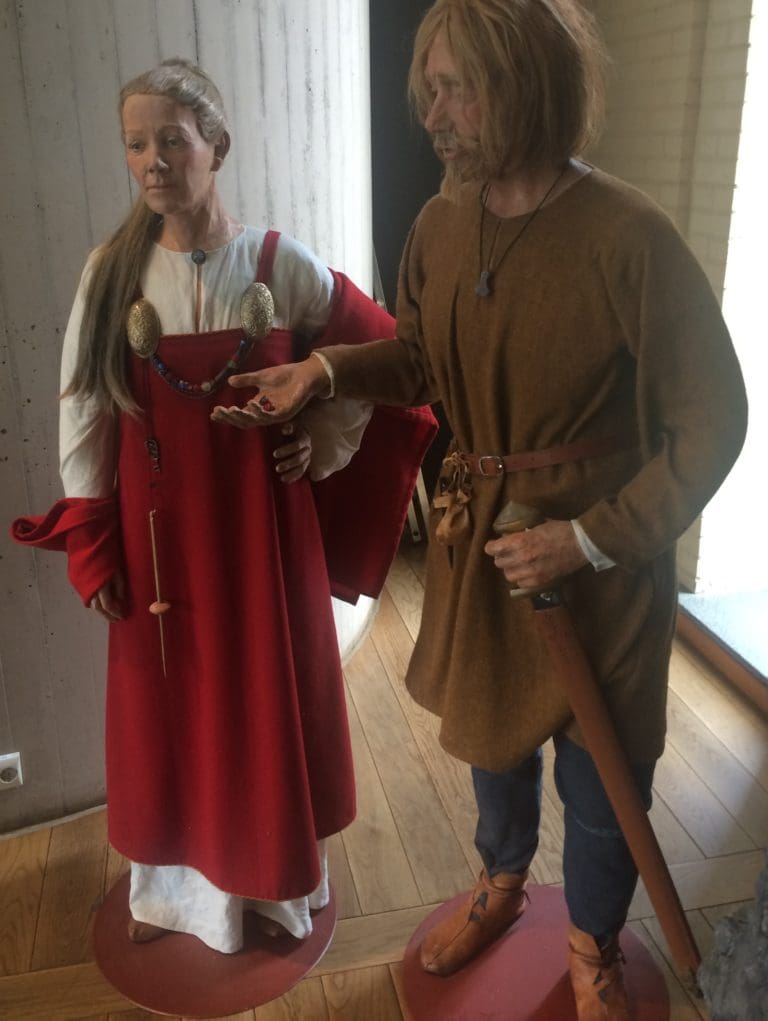
Brooches would often have colored beads hanging between them. This would allow a great deal of customization and a way for women to show off their sense of style. Many brooches were tri-lobed, especially the ones that were used to close the neckline. Besides beads, women would also hang other important items from the brooches, such as keys, scissors, knives, or other small and lightweight tools. This idea of hanging everyday, necessary tools is similar to the chatelain of later centuries. Few women’s graves have belt buckles, adding to the speculation that either the brooches were more common for carrying daily items than bags or that women’s belts were fabric rather than leather.
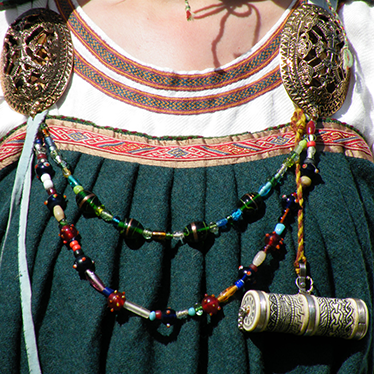
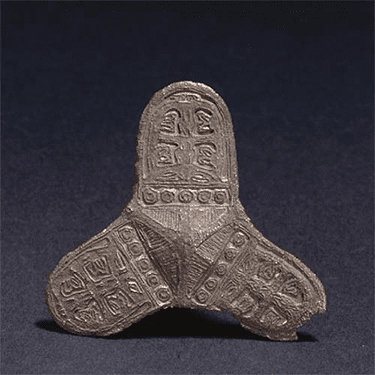
Additional Garments
Over the top of their dresses, Viking women would often wear cloaks or coats. One coat found in Birka has a low neckline as to show off the brooches on the apron dress underneath. These coats would often feature the lobed brooch mentioned earlier. Coats like other pieces of Viking women’s clothing would have been worn long. Sagas such as the Gisla saga describes women’s clothing as being rather long. However, this literary evidence may focus mostly on clothing from special occasions as long clothing is highly impractical in a rural society. Any trim on their coats would have been woven, similarly to the trim on men’s tunics. This trim was usually made from brightly colored yarn.
Besides coats, women also often wore headdresses. Evidence suggests that women of all ranks would wear something to cover their heads. At the Oseberg ship burial, some of the finds suggest that it could have been a simple handkerchief knotted over the head. Some have speculated that the type of headdress would have distinguished married from unmarried women. When it comes to footwear, women would wear the same types of shoes as men, meaning that they would wear leather, turned-style shoes.
In this article, we looked at women’s Viking clothing, starting from the inner layers and ending with their outer garments and accessories. Just like for men, the type of garments that women wore did not change much from person to person. Instead, customization would have focused on the trim, color, and cuts.
-
Lientje Viking Maiden Outfit
SKU: OUTFIT-F27Rated 5.00 out of 5$68.00 – $70.00$64.60 – $66.50 Add to Cart

